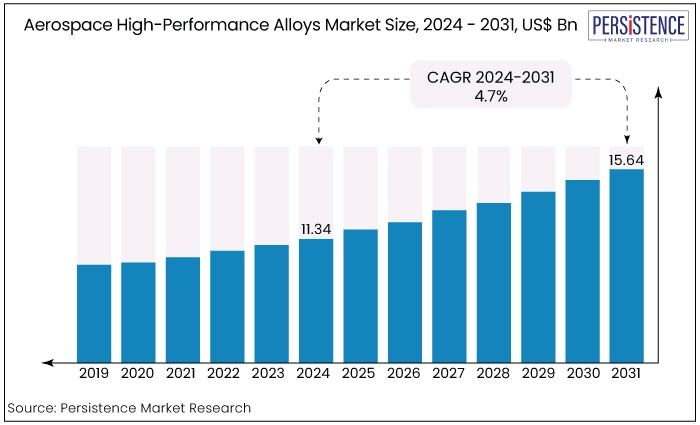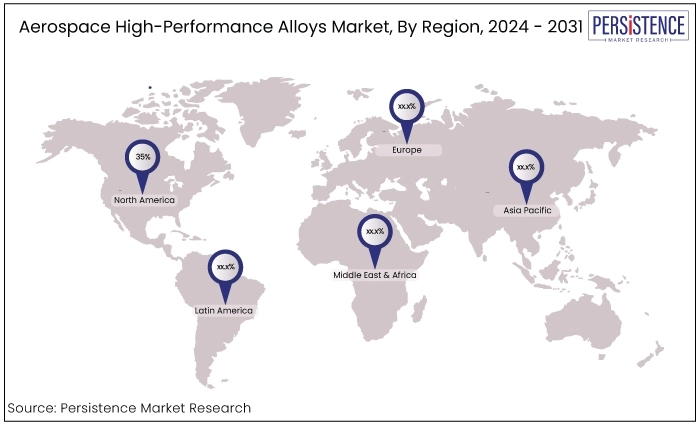Industry: Healthcare
Published Date: August-2024
Format: PPT*, PDF, EXCEL
Delivery Timelines: Contact Sales
Number of Pages: 154
Report ID: PMRREP34739
The global breast lesion localization methods market is estimated to be valued at US$6.8 Bn by the end of 2031 up from US$2.52 Bn recorded in 2024. The market is expected to secure a CAGR of 5.7% during the forecast period between 2024 and 2031.
|
Market Attributes |
Key Insights |
|
Breast Lesion Localization Methods Market Size (2024E) |
US$2.52 Bn |
|
Projected Market Value (2031F) |
US$6.8 Bn |
|
Global Market Growth Rate (CAGR 2024 to 2031) |
5.7% |
|
Historical Market Growth Rate (CAGR 2019 to 2023) |
3.8% |

|
Category |
Projected CAGR through 2031 |
|
Technology Type - Wire Localization |
7.9% |
The wire localization segment is poised to account for a significant share in the breast lesion localization methods market due to its established efficacy and widespread adoption in clinical practice.
Wire localization, a technique that has been used for decades, remains a cornerstone in breast cancer surgery due to its precision and reliability. This method involves placing a thin wire into the breast tissue to mark the exact location of a lesion, which is then used to guide the surgeon during the biopsy or lumpectomy procedure.
One of the primary reasons for the continued dominance of wire localization is its proven track record in effectively identifying and targeting lesions, particularly those that are non-palpable or located deep within the breast tissue. The technique's accuracy in marking lesions ensures that the entire affected area is removed, which is critical for successful cancer treatment and minimizing the risk of recurrence.
Wire localization is a well-understood procedure with established protocols, making it a preferred choice among surgeons who value its reliability and familiarity.
|
Category |
Projected CAGR through 2031 |
|
End User - Hospitals |
7.6% |
Hospitals to exhibit a CAGR of 7.6% through 2031. The segment growth is due to their pivotal role in advanced diagnostic and treatment processes.
As primary centers for specialized medical care, hospitals are equipped with sophisticated imaging technologies and have access to a wide range of localization methods crucial for the accurate diagnosis and treatment of breast lesions. Their substantial market share is attributed to several key factors.
Hospitals typically offer a comprehensive suite of diagnostic services, including advanced imaging modalities such as mammography, ultrasound, MRI, and more recently, AI-enhanced imaging systems. These facilities are often the first point of contact for patients requiring detailed and high-resolution imaging to accurately localize and assess breast lesions.
The complexity and diversity of cases managed by hospitals necessitate the use of advanced localization methods that can provide precise and reliable results, thereby driving their significant market share.
Hospitals are equipped with multidisciplinary teams that include radiologists, oncologists, and surgeons who collaborate to determine the most effective localization strategies. This integrated approach ensures that the latest and most effective localization technologies are employed, further consolidating their position in the market.
|
Region |
CAGR through 2031 |
|
North America |
9.2% |
North America is poised to account for a significant share of the breast lesion localization methods market due to several key factors that underscore the region’s leading role in healthcare innovation and adoption. The presence of advanced healthcare infrastructure and a high concentration of cutting-edge medical technology in North America creates a conducive environment for the uptake of sophisticated breast lesion localization methods.
Key medical centers and research institutions in the region are at the forefront of developing and implementing new technologies, contributing to the widespread availability and use of these advanced tools.
North America benefits from a robust healthcare funding ecosystem that supports the development and commercialization of innovative medical devices. Significant investments from both private and public sectors, including substantial research and development budgets, facilitate the continuous advancement and integration of new localization methods.

|
Region |
CAGR through 2031 |
|
Asia Pacific |
10.5% |
Asia Pacific is poised to exhibit a notable CAGR rate in the breast lesion localization methods market due to several factors that drive both demand and investment in healthcare innovations. Rapid economic growth and a burgeoning middle class across countries such as China, India, and Japan are significantly boosting healthcare expenditure.
As incomes rise, there is an increased willingness and ability to invest in advanced diagnostic technologies, including sophisticated breast lesion localization methods. The region is experiencing a substantial shift in healthcare infrastructure development.
Governments and private sectors are investing heavily in modernizing healthcare facilities and expanding access to cutting-edge medical technologies. This infrastructure improvement includes the adoption of advanced imaging technologies and localization methods that enhance diagnostic accuracy and patient outcomes.
The growing awareness of breast cancer and the need for early detection are also propelling market growth, as increased public health initiatives and educational campaigns encourage regular screenings and the use of advanced diagnostic tools.
The breast lesion localization methods market projected to experience significant growth. Market growth is driven by advancements in technology, increasing awareness of breast cancer, and the rising prevalence of the disease.
As breast cancer remains one of the most common cancers among women worldwide, the demand for effective and accurate diagnostic and treatment methods continues to rise. This has led to the development and adoption of advanced breast lesion localization methods that enhance the precision of surgical interventions and improve patient outcome
One of the primary factors contributing to the growth of this market is the increasing adoption of minimally invasive procedures. Traditional methods of breast lesion localization, such as wire localization, are being increasingly replaced by more advanced techniques like radioactive seed localization (RSL), magnetic seed localization, and non-radioactive radar localization.
Growing awareness about early detection and the importance of regular breast cancer screenings is leading to an increase in the number of breast lesion localization procedures. This trend is particularly evident in developed regions like North America and Europe, where healthcare infrastructure is robust, and there is widespread access to advanced medical technologies.
The breast lesion localization methods market has experienced significant evolution over recent years, driven by advancements in imaging technologies and increasing awareness of early breast cancer detection.
The market has been characterized by a gradual shift from traditional techniques such as wire localization to more sophisticated methods, including radioactive seed localization and advanced imaging-guided systems. This transition has been fueled by the demand for greater accuracy, reduced patient discomfort, and enhanced procedural efficiency.
The market has seen a surge in the adoption of technologies like magnetic resonance imaging (MRI)-guided localization and ultrasound-guided techniques in recent years, which offer improved precision and real-time visualization.
The integration of artificial intelligence and machine learning in imaging modalities has further revolutionized the field, enabling more accurate and individualized localization of breast lesions. The forecast for the breast lesion localization methods market remains positive, with continued growth expected due to ongoing technological advancements and increasing emphasis on early and accurate diagnosis of breast cancer.
Increasing Incidence of Breast Cancer
The rising incidence of breast cancer is a significant driver for the demand for advanced breast lesion localization methods. As the prevalence of breast cancer continues to increase globally, there is a growing need for more accurate and effective localization techniques to enhance early detection, diagnosis, and treatment.
Breast cancer remains one of the most common malignancies among women, with its incidence rates climbing in various regions due to factors such as lifestyle changes, aging populations, and improved detection methods revealing previously undiagnosed cases.
This escalating incidence necessitates the development and adoption of advanced localization methods that can precisely identify and target breast lesions. Effective localization is crucial for guiding surgical procedures, such as lumpectomies or biopsies, ensuring that the cancerous tissue is accurately removed while preserving healthy breast tissue.
Traditional methods, such as wire localization, have been increasingly complemented or replaced by newer technologies like radioactive seed localization, magnetic seed localization, and ultrasound-guided techniques. These innovations offer improved accuracy, reduced invasiveness, and better patient outcomes, addressing the challenges posed by the growing number of breast cancer cases.
Early Detection and Personalized Medicine
The emphasis on early detection and personalized medicine has significantly elevated the need for accurate breast lesion localization methods. Early detection of breast cancer is crucial for improving patient outcomes, as it allows for timely intervention and often results in more effective treatment options.
There is a growing demand for localization methods that can precisely identify and characterize lesions before they progress as the medical community increasingly recognizes the importance of catching cancer at its earliest stages.
Advanced localization techniques, such as magnetic resonance imaging (MRI)-guided localization, radiofrequency identification, and enhanced ultrasound imaging are becoming essential tools in this effort. These methods provide detailed insights into the size, location, and characteristics of lesions, facilitating more accurate and effective interventions.
Personalized medicine further drives the need for sophisticated localization methods by tailoring treatment plans to the specific characteristics of an individual’s cancer. As cancer treatment evolves towards more personalized approaches such as targeted therapies and customized surgical technique accurate localization of lesions becomes crucial.
High Costs Associated with Breast Lesion Localization Techniques
The high costs associated with advanced breast lesion localization techniques and their supporting equipment present a significant barrier to widespread adoption, particularly in low-resource settings.
Advanced methods, such as radiofrequency, magnetic resonance imaging (MRI)-guided localization, and intraoperative ultrasound, often require specialized equipment and technology that come with substantial price tags.
In low-resource settings, where healthcare budgets are often constrained, the financial burden of investing in such high-cost technologies can be prohibitive. The allocation of limited resources to high-cost medical equipment may divert funds from other essential services and patient care needs.
Regulatory Challenges
Patient safety concerns play a crucial role in the acceptance and utilization of breast lesion localization methods. These concerns stem from the potential risks associated with various localization techniques, which can influence both patient trust and clinical decision-making.
Some localization methods, such as wire localization or radioactive seed localization, involve procedures that can be invasive, leading to potential complications such as infections, discomfort, or bleeding.
Wire localization, for instance, requires the insertion of a wire into the breast tissue, which may cause pain and anxiety for patients, as well as potential displacement of the wire, complicating the surgical process.
Certain methods may have side effects that can impact patient health and recovery. For example, radioactive seed localization involves the implantation of a radioactive seed, which, while generally safe, raises concern about radiation exposure and its long-term effects.
Integration of Advanced Imaging Technologies
The integration of advanced imaging technologies with breast lesion localization methods is another key opportunity in this market. Technologies such as 3D mammography, MRI, and ultrasound have revolutionized the way breast lesions are detected and localized.
Imaging modalities provide greater accuracy in identifying the exact location and size of lesions, which is crucial for planning effective surgical interventions. The demand for these integrated solutions is growing as healthcare providers seek to improve the precision of breast cancer surgeries.
The ongoing development of new imaging technologies and their integration with localization methods is expected to lead to the creation of even more precise and patient-friendly solutions.
Companies that invest in R&D to develop these integrated systems stand to gain a significant competitive advantage in the market, as healthcare providers increasingly prioritize technologies that enhance surgical precision and patient safety.
Collaborations and partnerships to develop innovative products and accelerate their launch across nations are the key growth strategies followed by the key players in the market. Companies are continuously investing in research and development to introduce innovative and novel interference blockers.
Recent Developments in the Breast Lesion Localization Methods Market
|
Attributes |
Details |
|
Forecast Period |
2024 to 2031 |
|
Historical Data Available for |
2019 to 2023 |
|
Market Analysis |
US$ Billion for Value |
|
Key Regions Covered |
|
|
Key Market Segments Covered |
|
|
Key Companies Profiled in the Report |
|
|
Report Coverage |
|
|
Customization & Pricing |
Available upon request |
By Technology Type
By End User
By Region
To know more about delivery timeline for this report Contact Sales

The market is estimated to be valued at US$2.52 Bn in 2024.
Innovations in imaging technologies, such as 3D mammography and MRI, have improved lesion detection, driving demand for effective localization methods.
Some of the key players operating in the market are Merit Medical Systems BD, ARGON MEDICAL, Hologic, Inc., Endomagnetics Ltd.
The wire localization technology type segment to record a significant share,
A compelling opportunity in the market lies in the development and adoption of non-radioactive localization techniques.
North America is set to account for a significant share of the market.